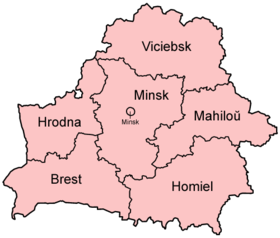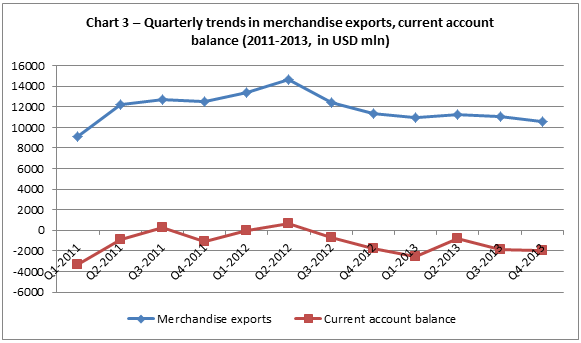The United Nation of Belarus?

Belarusians resemble Ukrainians in many respects, but they do not exhibit any kind of the politically relevant dualism between western and eastern regions, which greatly contributed to the recent Ukrainian events. The urge to find the same patterns in different countries with different histories often results in confusing outcomes.
Professor Aleh Manayeu, director of Independent Institute for Socioeconomic and Political Research corroborated this view with the results of March public opinion survey conducted by his institute. Presenting them last month in Minsk he commented that the population of Western and Eastern Belarus do not differ in their political views.
Western Belarus Is Geographical Notion
"There are some differences, yet not of a Ukrainian magnitude. The values' cleavage runs along the line of “supporters” and “opponents” of the government,” said Manayeu.
“To simplify, we can say that the residents of large cities are more dynamic, more pro-European, more pro- democracy and market economy than residents of small towns”. Manayeu emphasised the point that small town dwellers in Belarus do not differ substantially in their political views throughout the country.
Today, Belarus includes six provinces which have essentially a shared historical fate and very close anthropological traits. Only the Paliessie region in the south (now divided between Belarus and Ukraine, as well as inside Belarus between Brest and Homiel provinces) had some more peculiarities due to its isolation in the marshes.
The religious split between Orthodox and Catholic believers led to some confrontations in the past but not in modern times. It became muzzled after Belarusians switched en masse between these denominations as well as Protestantism and the Uniate Church.
Exploitation of Orthodox and Catholic churches by Russia and Poland increased the religious scepticism of Belarusians Read more
Exploitation of Orthodox and Catholic churches by Russia and Poland, respectively, increased the religious scepticism of Belarusians. According to two Gallup surveys from 2009 and 2011, Belarus was among the top-10 of most irreligious of nations in the world.
So what historical background and political significance does “Western Belarus” possess? In Ukraine, centuries of separate political, socioeconomic and cultural development resulted in the emergence of “Western Ukraine”.
In every election since 1991 it voted absolutely contrary to the population of Eastern Ukraine. Belarusian differences between the more Catholic West and more Orthodox East have never led to the emergence of any firm borders between them. Actually, “Eastern” and “Western” Belarus emerged only as a consequence of their separate existence of the two halves of the country between 1921 and 1939.
Back then, between the World Wars, the eastern half found itself in the Soviet Union. There the Bolshevik government created the Belarusian proto-state. In Soviet Belarus, modernisation accompanied wide-scale political repression while the development of modern Belarusian culture was carried out along side Communist indoctrination.
The western regions lived under an increasingly authoritarian and chauvinist Polish administration. It launched a policy of colonisation, closed most Belarusian organisations and neglected Western Belarus in terms of its socioeconomic and cultural development.
These unfavourable conditions effectively blocked the formation of a distinct Belarusian identity, alternative Belarusian culture and any democratic politics in the Polish-ruled regions. Furthermore, it drove almost every relatively important Western Belarusian institutions and activist to left-wing movements supported by communist Minsk and Moscow.
Levelling the Ground
After the reunification of Belarus in 1939, and especially after the Second World War the Soviet authorities worked on extinguishing regional differences. They removed many – although by far not all – Polish residents from the western regions.
Then came the aggressive modernisation of the West and construction of modern industrial facilities there. The Soviet Belarusian authorities completely changed the territorial administrative regions, mixing them as much as possible between provinces from both eastern and western districts.
Culturally, the communists suppressed both the Catholic and Orthodox Churches. After decades of atheistic Soviet rule, Belarusians today display no strong religious feelings and are much more likely to fight each other over nearly any other issue besides but religion.
In recent two decades some intellectuals tried to revive the Western Belarusian myth as a more 'Belarusian' alternative to Soviet Belarusian heritage. Yet the Western Belarusian myth collapses before such simple facts as the Polish census of 1931 which registered Belarusians as a minority in Western Belarusian lands or statistics of Belarusian schools in Western Belarus whose numbers in late 1930s sat at zero.
More Belarusian Eastern Regions
Indeed, the 2009 public opinion survey conducted together by Sociological Laboratory Novak and Belarusian Institute for Strategic Studies demonstrated that the most “Belarusian” was eastern Mahiloū province.
The main tenet of Belarusian identity remains one's attitude toward the Belarusian language. A majority of the Mahiloū region population expressed their desire to use Belarusian and claimed to have a good command of the language.
 The province is undoubtedly Eastern Belarusian, Orthodox and borders Russia. Many reasons might explain this situation yet one stands out.
The province is undoubtedly Eastern Belarusian, Orthodox and borders Russia. Many reasons might explain this situation yet one stands out.
The Mahiloū region belonged to the core of Soviet Belarus since its beginnings. It means that the Bolshevik government conducted here the most profound policies of Belarusisation and it lasted longer than in other regions.
It is likely that linguists could find more people in the West speaking Belarusian and their language would sound less influenced by Russian.
Yet population in the Western regions have more vague and mixed identity and understanding of who they are and which language they speak. Quite often, even today one can hear in the West the notions of ruski [literally 'Ruthenian' sometimes misinterpreted as 'Russian'] for Orthodox and polski [literally 'Polish'] for Catholic.
As a counter argument allegedly proving the Belarusian nationalist credentials of the west, some analysts refer to the results of 1994 presidential election as the nationalist democrat candidate Zianon Pazniak achieved the best results in “Western Belarus.” Indeed, the 1994 race remains the only presidential election recognised as free and fair by all major political forces. Still, we shall not take those results at face value.
Pazniak got more than a quarter of all the votes (nowhere near half) in only nine districts out of 118. Some of these districts were rather small and they made up a tiny part of the 1921-39 “Western Belarus.” It could be just plain conservatism of voters which provided Pazniak with this level of support rather than nationalism.
Belarus demonstrates no tendency towards splitting or quarrelling along regional lines Read more
All in all, Belarus demonstrates no tendency towards splitting or quarrelling along regional lines. Of course, Belarusian language-linked culture remains neglected, yet the language situation does not differ significantly between regions.
Nobody is eradicating Belarusian, though every political force politicises it. The opposition often pretends to be the only defender of the Belarusian language. It undermines those who detach the language issue from politics.
The authorities prefer to do nothing to promote the language out of fear of unintentionally strengthening the opposition. As a result, the language disappears – throughout Belarus.
The good news is that Belarus may face many catastrophes but definitely not a split scenario akin to that of Crimea or Eastern Ukraine. Not only because the Belarusian government – unlike the former Ukrainian one – indeed controls the country, but because the nation effectively demonstrates that it is united.
Far too many analysts in recent months followed the temptation to use Ukrainian allusions to predict Belarusian future. That is a dubious approach, Belarus has its own problems, opportunities and specifics which require cautious handling of analogies with neighbouring nations.





